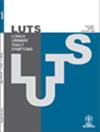Selective Bladder Denervation via Radiofrequency Ablation Versus Intravesical Onabotulinum Toxin A for Refractory Overactive Bladder: The Short-Term Results of A Preliminary Randomized Controlled Trial
Abstract
Introduction
Overactive bladder (OAB) is a prevalent and burdensome condition associated with significant impairments in health-related quality of life and substantial healthcare costs. While third-line therapies such as intravesical onabotulinum toxin A (BTA) and sacral neuromodulation are established treatment options for refractory cases, selective bladder denervation (SBD) via radiofrequency ablation (RFA) has emerged as a novel minimally invasive alternative. This study aimed to prospectively compare the efficacy and safety of SBD versus BTA in women with refractory OAB.
Methods
In this randomized controlled trial, 54 women with refractory OAB were allocated to receive either SBD or BTA. Patients were followed for 12 weeks and assessed for changes in urgency episodes, urgency urinary incontinence (UUI), daily voiding frequency, overactive bladder symptom scores (OAB-V8), quality of life (I-QOL), post-void residual (PVR) volume, and treatment-emergent adverse events.
Results
Both interventions resulted in significant symptom improvement relative to baseline (p < 0.05). However, BTA demonstrated superior therapeutic efficacy, with a significantly higher proportion of patients achieving ≥ 50% reductions in urgency and UUI episodes across all follow-up visits (p < 0.05). Additionally, BTA yielded greater improvements in symptom scores and quality of life indices. Adverse events were infrequent and mild in both groups. The BTA group exhibited a transient increase in PVR at early follow-up, though no cases of acute urinary retention necessitating catheterization were observed. The SBD group showed modest symptom relief with stable objective parameters.
Conclusion
In this prospective randomized trial, intravesical BTA provided superior clinical efficacy compared to SBD across both subjective and objective outcome measures in women with refractory OAB. While SBD may represent a minimally invasive option for select patient populations, BTA remains the more effective third-line intervention. Further large-scale, sham-controlled studies with longer follow-up are warranted to clarify the role of SBD and optimize patient selection.


 求助内容:
求助内容: 应助结果提醒方式:
应助结果提醒方式:


